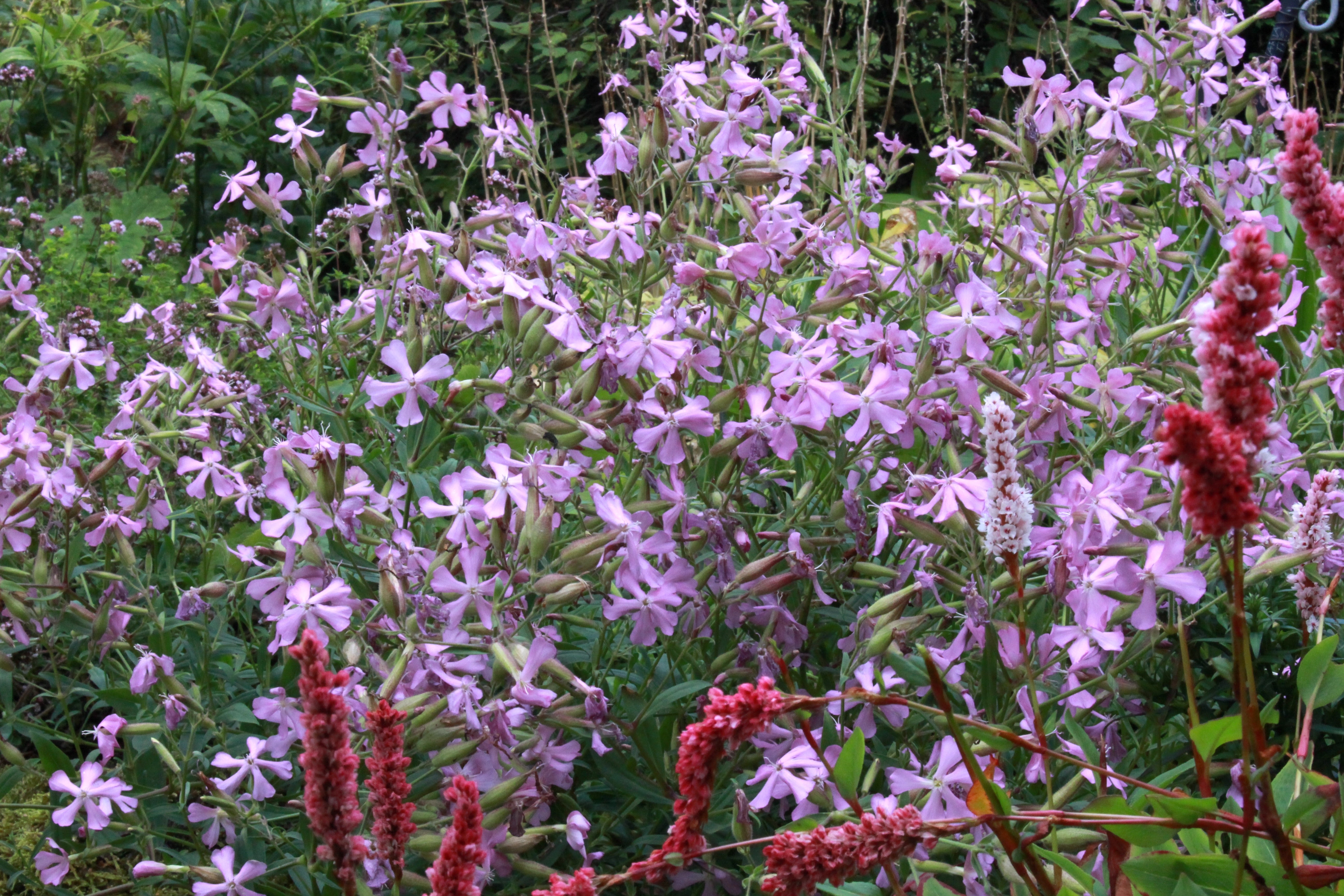Saponaria x lempergii 'Max Frei'
Approx. 0.5 litre pot
About this cultivar:
Saponaria x lempergii 'Max Frei' is a low-growing perennial that forms a dense mat of semi evergreen foliage. Its leaves are a soothing grey-green hue, providing year-round interest to the garden. Standing at a modest height, it bears prodigious amounts of charming pink blooms with five delicate petals. These flowers adorn its hairy stems from summer through autumn, adding a touch of colour and grace to any garden. Depending on the weather this can flower for a very long time.
The species stems from a cross between the species, S. cypria and S. haussknechtii and the hybrid name pays tribute to Dr. Fritz Lemperg of Styria, Austria.
- Position: Full sun, partial shade
- Soil: Almost any soil, grows well in Ballyrobert
- Flowers: June, July, August, September, October
- Other features: Grows well in Ballyrobert
- Hardiness: H4 - Hardy through most of the UK (-10 to -5°C), Fully hardy, grows well in Ballyrobert
- Habit: Clump forming
- Foliage: Semi evergreen
- Height: 15 - 45 cm (0.5 - 1.5 ft)
- Spread: 15 - 45 cm (0.5 - 1.5 ft)
- Time to full growth: 2 to 5 years
- Plant type: Herbaceous Perennial
- Colour: Green, pink
- Goes well with: -
About this genus:
Saponaria is a genus encompassing around 30 to 40 species of flowering plants in the family Caryophyllaceae (commonly called the pink family or carnation family). These versatile plants are known for their attractive blooms, adaptability to various growing conditions, and historical uses in traditional medicine and soap-making.
The name Saponaria is derived from the Latin word "sapo," meaning soap, alluding to the genus's historical use in producing lather for cleaning purposes. This reflects the presence of saponins, natural compounds found in the plant that produce a soapy froth when mixed with water – the first ever natural soap.
Culturally, Saponaria holds significance beyond its botanical attributes. In traditional herbal medicine, various parts of the plant have been used to treat ailments ranging from skin conditions to respiratory issues. Modern research is still being performed regarding these properties. Additionally, its association with soap-making dates back centuries, with early civilizations utilizing the plant's saponins for cleansing purposes. Soapwort was cultivated as a useful plant in Roman gardens and around Roman baths.
Originating primarily from Europe, Saponaria species have also been naturalized in other parts of the world, including North America and Asia. Their adaptability to different climates and soil types has contributed to their widespread cultivation and popularity in gardens and landscapes.
Saponaria species exhibit distinctive characteristics that set them apart. Most notably, they are known for their profusion of small, five-petaled flowers borne in clusters atop slender stems. These blooms come in various shades of pink, white, or red, adding vibrant splashes of colour to gardens and natural landscapes. Saponaria is closely related to the genus Silene (campion), being distinguished from these by having only two (not three or five) styles in the flower.
The foliage is typically narrow and lance-shaped, with some species featuring opposite leaves and others having whorled arrangements. This foliage provides an attractive backdrop to the colourful flowers and remains green and lush throughout the growing season. It can de deciduous or semi evergreen depending on the species or climate.
In terms of growth habit, Saponaria species can be herbaceous perennials or annuals, depending on the species and climate. We grow only perennials at Ballyrobert. They tend to form low mounds or spreading mats, making them suitable for ground cover in sunny to partially shaded areas.
In garden settings, Saponaria species are valued for their low maintenance requirements and ability to thrive in various soil types. They grow well in the heavy wet clay at Ballyrobert but you can also try them in some dry areas.
While some Saponaria species may have a tendency to self-seed and spread vigorously, the ones we have will be mostly sterile-ish cultivars so this isn’t much of concern.
Overall, the genus Saponaria offers gardeners a diverse selection of attractive and adaptable plants with cultural, ecological, and aesthetic significance. Whether used as ground covers, edging plants, or accents in mixed borders, Saponaria species bring beauty and utility to outdoor spaces.






